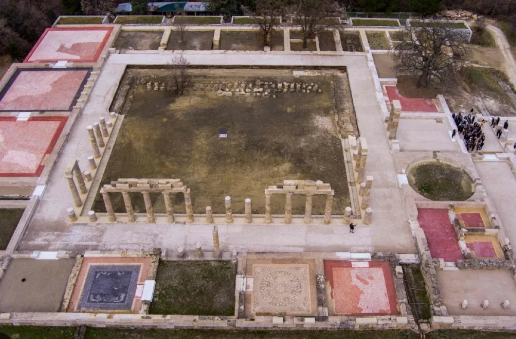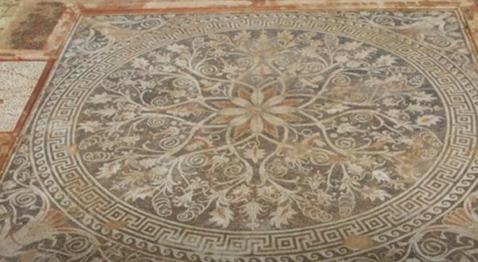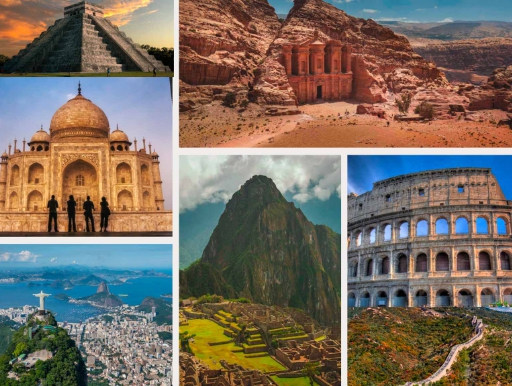그리스, 알렉산더 왕궁 복원하여 재개장
Greece reopens 2,400-year-old palace where Alexander the Great was crowned
기원전 4세기 그리스 북방 마케도니아를 대제국으로 일군 알렉산더 대왕의 왕궁이 16년간의 복원 사업을 거쳐 재개되었습니다

Greece has reopened the ancient palace where Alexander the Great became King of Macedonia some 2,400 years ago after it underwent restoration.
그리스는 약 2400년 전 알렉산더 대왕이 마케도니아의 왕이 되었던 고대 궁전을 복원하여 재개장했습니다.
**Restoration:
Meaning: The action of returning something to a former condition, in this context, the process of repairing and renovating the ancient palace.
Example: The restoration of the ancient palace aimed to bring back its historical glory and significance.
Restoring the birth place of such an impressive empire was no easy task. It took the Greek government 16 years, with help from the European Union and more than 20 million euros ($21.9 million) according to the Greek Cultural Ministry.
이처럼 인상적인 제국의 발상지를 복원하는 것은 쉬운 일이 아니었습니다. 그리스 문화부에 따르면 그리스 정부는 유럽연합의 도움과 2,000만 유로(2,190만 달러) 이상의 예산을 투입해 16년이라는 시간을 투자했습니다.
Alexander’s rule saw him conquering a huge area stretching from modern-day Greece to Egypt, Iran, and as far as northern India and central Asia.
알렉산더의 통치 기간 동안 현대 그리스에서 이집트, 이란, 인도 북부와 중앙 아시아에 이르는 광대한 지역을 정복했습니다.
It was mostly built by Alexander the Great’s father Philip II of Macedonia in the 4th century BCE.
기원전 4세기에 알렉산더 대왕의 아버지 마케도니아의 필립 2세에 의해 대부분 건설되었습니다.
It was built more than 2,300 years ago during the reign of Alexander’s father, Phillip II, who had transformed the kingdom of Macedonia into a dominant military power of ancient Greece.
2,300여 년 전 마케도니아 왕국을 고대 그리스의 군사 강국으로 탈바꿈시킨 알렉산더의 아버지 필립 2세가 통치하던 시절에 지어졌습니다.
**Dominant:
Meaning: Having control, influence, or authority over others; superior in power or strength.
Example: The kingdom of Macedonia, under the dominant rule of Philip II, became a formidable military power in ancient Greece.
The 4th century BC site spreads over 15,000 square meters and was one of the most important in classical Greece alongside the Parthenon in Athens. Aigai was capital of the Macedonian kingdom, the dominant military power of the time, and archeologists say the palace was the kingdom's spiritual center.
기원전 4세기에 세워진 이 유적지는 15,000평방미터에 달하며 아테네의 파르테논 신전과 함께 고전 그리스에서 가장 중요한 유적지 중 하나였습니다. 아이가이는 당시 군사 강국이었던 마케도니아 왕국의 수도였으며, 고고학자들은 이 궁전이 왕국의 정신적 중심지였다고 말합니다.
**Archeologists:
Meaning: Experts who study human history and prehistory through the excavation of artifacts, structures, and other physical remains.
Example: Archeologists meticulously explored the site, uncovering ancient artifacts that provided insights into the culture of that era.

The palace contained column-rimmed courtyards, courts, places of worship, and spacious banquet halls, its floors decorated with patterned marble and intricate mosaics. The building covered a ground area of 15,000 sq. meters (160,000 sq feet), a little under the area covered by the U.S. Capitol building.
궁전에는 기둥으로 둘러싸인 안뜰, 법정, 예배당, 넓은 연회장이 있었고, 바닥은 무늬가 있는 대리석과 복잡한 모자이크로 장식되어 있었습니다. 건물 면적은 15,000㎡(160,000평방피트)로 미국 국회의사당 건물 면적에 약간 못 미칩니다.
**Courtyard:
Meaning: An open area surrounded by walls or buildings, often within a building complex.
Example: The palace featured beautifully designed column-rimmed courtyards where various ceremonies and gatherings took place.
**Banquet Halls:
Meaning: Large rooms designed for hosting feasts, ceremonies, or social events.
Example: The spacious banquet halls within the palace were adorned with elegant decorations, reflecting the grandeur of the Macedonian kingdom.
**Intricate:
Meaning: Complicated, detailed, and complex, often involving intricate patterns or structures.
Example: The palace's interior boasted intricate carvings on its walls, showcasing the skilled craftsmanship of the ancient Macedonian artisans.

























